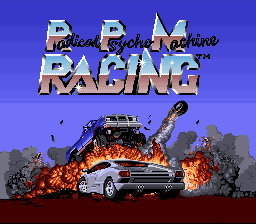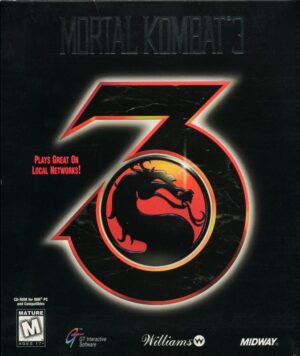Retro Replay Review
Gameplay
RPM Racing builds on the arcade-inspired lineage of Rareware’s R.C. Pro-Am (1988) and Electronic Arts’ Racing Destruction Set (1985), with the latter serving as its most direct influence. What sets RPM Racing apart is its blend of strategy and high-octane action. Before each event, you choose from three vehicle types—each boasting distinct stats for pavement, dirt, and ice—then outfit your car with upgrades such as tires, engines, shocks, and armor. Your choices matter: a heavier car may take bumps better but struggle on slick ice, while a nimble racer can dart through tight turns but suffers from low armor.
(HEY YOU!! We hope you enjoy! We try not to run ads. So basically, this is a very expensive hobby running this site. Please consider joining us for updates, forums, and more. Network w/ us to make some cash or friends while retro gaming, and you can win some free retro games for posting. Okay, carry on 👍)
Combat elements are woven seamlessly into the racing formula. Armed with oil slicks, nitro boosts, and mines, you’ll find yourself weighing offense versus defense on every lap. Do you unleash an oil slick in a tight corner to spin out a rival, or reserve nitro for a final straightaway dash to the finish? The variety of weapons and track hazards—bumpy off-road sections, ice patches, and narrow chicanes—keeps each race fresh and unpredictable.
Game modes include a full race season, single race, and a robust custom track designer. In single-player races, the second slot is filled by one of eight AI opponents, each with their own signature vehicle and driving style. Across 128 distinct courses, you’ll face icy hairpins, dirt jumps, and pavement loops that demand adaptability as much as speed. The sheer number of tracks ensures you’ll rarely encounter a repeat layout, making every session feel new.
Season mode introduces a light economic layer, where every track carries an entrance fee and a prize pool. Victories and podium finishes net you cash, while unsuccessful runs can deplete your funds. You can pay to move up a racing class—unlocking higher-stakes circuits—or drop down for free if you need to rebuild your bankroll. This risk-reward structure adds depth, turning each decision at the pit stop into a strategic gamble.
Graphics
RPM Racing’s visuals are solid for an early ’90s DOS title, featuring a crisp 2D top-down perspective that keeps the action easy to follow. Track surfaces—pavement, dirt, and ice—are clearly distinguished by color palettes and texture patterns, helping you anticipate changes in traction. Animations for skidding, crashing, and weapon effects are simple but effective, conveying a sense of speed and impact without overwhelming the screen.
The user interface is clean and functional. Menus for selecting cars, upgrades, and race classes are laid out logically, with clear icons showing tire levels, engine power, and armor strength. During races, your HUD displays position, lap count, and remaining weapon charges without cluttering the view. This straightforward presentation ensures you spend more time racing and less time navigating menus.
The custom track editor offers a Pipe-Mania-style grid where you piece together straights, corners, T-junctions, and criss-cross sections. Each tile snaps together fluidly, and the visual feedback—highlighting valid connections—makes designing tracks intuitive. Colors and textures remain consistent with the main game, so your handmade circuits feel like organic extensions of the core experience.
While RPM Racing won’t rival modern 3D racers, its graphic style has a timeless charm. The bold colors, sharp contrasts, and clear sprite work age better than many contemporaries, and the track variety keeps your eyes engaged. For retro aficionados, the game’s aesthetic is part of its enduring appeal.
Story
RPM Racing doesn’t offer a deep narrative or character-driven plot, but it crafts its own simple lore through the progression of racing classes and the colorful roster of AI opponents. Each class elevates the stakes, with bigger fees, larger prizes, and flashier track designs—creating a rising-tension arc that mirrors the thrill of moving up through the ranks.
Between races, you get just enough context to feel invested: brief text summaries of prize payouts, your current standing in the season, and occasional taunts from rival drivers. Though there’s no cinematic introduction or voiced dialogue, the financial push-and-pull of entrance fees versus winnings provides its own narrative momentum, as you fight to stay afloat or risk everything on a single high-stakes gamble.
The custom-track mode can be seen as a sandbox narrative, where you tell your own story by crafting treacherous loops, gravity-defying jumps, and cunning traps. Inviting friends or AI to tackle your creations adds a layer of emergent storytelling, as each crash or comeback becomes part of your personal racing saga.
Overall Experience
RPM Racing shines as a deep, customizable racer that balances strategic choices with fast-paced action. The combination of car setups, weapon management, and track variety ensures that mastering the game takes both skill and foresight. Racing novices will appreciate the accessible controls and clear visuals, while veterans will find the season economy and custom editor rewarding for repeated play.
Its retro graphics and simple story framework won’t satisfy those seeking modern storytelling or photorealism, but the game’s strengths lie in its addictive gameplay loop and creative freedom. Whether you’re tackling a high-stakes season race or building death-trap tracks for friends, RPM Racing delivers a satisfying blend of challenge and fun.
For fans of top-down racers, track editors, or early EA classics, RPM Racing is a solid title that holds up surprisingly well more than three decades later. With 128 built-in tracks, three vehicle classes, a suite of weapons, and an intuitive editor, it offers a wealth of content at a modest price—making it an excellent choice for retro enthusiasts and newcomers alike.
Ultimately, RPM Racing stands as a testament to EA’s early innovation in the racing genre and lays the groundwork for successors like Rock ’n Roll Racing. If you crave tactical depth in a pick-up-and-play package, this vintage racer still has plenty of horsepower under the hood.
 Retro Replay Retro Replay gaming reviews, news, emulation, geek stuff and more!
Retro Replay Retro Replay gaming reviews, news, emulation, geek stuff and more!









Reviews
There are no reviews yet.